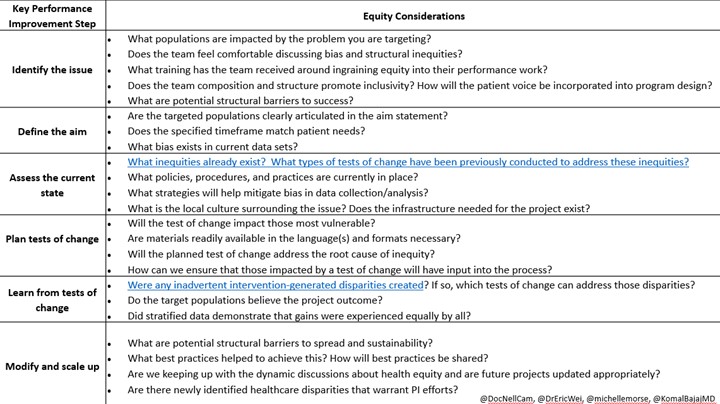Why It Matters
Performance improvement initiatives designed without an intentional focus on equity may foster intervention-generated inequalities that further disadvantage historically oppressed and exploited groups. This adds to the already significant impact of systemic racism. As we have described previously (Applying an Equity Lens to Performance Improvement), proactive application of an equity lens — i.e., incorporating the qualitative and quantitative socioeconomic conditions of patients to improve processes and outcomes in intervention design — is essential to truly advance quality care.
As part of its commitment to systemic equity, NYC Health + Hospitals integrates a meaningful and impactful equity perspective right from the start of all performance improvement work. This is based on historical and anticipated inequities surrounding each project, and has so far focused on race/ethnicity, gender, and language preference most often. Using data stratification measures uncovered inequities in 20 percent of projects where the first round of tests of change have been executed. This has resulted in further tests of change to close the gaps. For example, one project found that Hispanic patients were disproportionately represented in a patient population that was not returning for physical rehabilitation follow up. The next tests of change included exploration of factors such as interpretation service usage by follow-up staff and the times follow-up calls were made.
Dissemination of this best practice has not come without challenges. These include refining data collection, standardizing the process of choosing and implementing equity analyses, and training staff to feel more empowered to engage in performance improvement. One way to address these challenges has been using guided questions for each key performance improvement step to encourage a deeper level of thinking, more discourse, and blind-spot recognition. This also helped to create a framework for utilizing equity lenses. Table 1 describes some important equity considerations at each step within a performance improvement project.

Table 1. NYC Health + Hospitals Equity Considerations
Tips for Incorporating Equity Into Improvement
- Be intentional about defining equity and equity lenses so everyone involved is using the same language and definitions.
- Remember this is a proactive approach. It’s too late to apply an equity lens after the performance improvement project has been completed. We must identify potential inequities so the lens we choose will have a high impact on the intended patient population in real-time. The issue being addressed should result in systemic change.
- Start with clearly outlined steps in the performance improvement process. Without clarity, project planning can have multiple blind spots which may inadvertently lead to worsening health inequities.
- Use a robust structure. Equity work can be categorized as performative when the process does not have clear accountability at each step. This can lead to reduced stakeholder buy-in, loss of momentum, lack of institutional memory, and the inability to produce quantifiable evidence for institutional and systemic change to improve the lives of our most vulnerable patients.
The table above should guide and prompt discussion about weaving equity into your performance improvement work. As projects evolve, it is likely that teams may need to revisit this guide. What can you do in the next 30 days to weave equity into your performance improvement programs?
Linelle Campbell, MD, MS, is Director of Equity, Quality & Safety at New York City Health + Hospital/Jacobi/North Central Bronx (@DocNellCam). Eric K. Wei, MD, MBA, is Chief Quality Officer at New York City Health + Hospitals. Michelle Morse, MD, MPH, is Chief Medical Officer and Deputy Commissioner for the Center for Health Equity and Community at the NYC Department of Health Wellness (@michellemorse). Komal Bajaj, MD, MS-HPEd, is Chief Quality Officer at NYC Health + Hospitals/Jacobi/North Central Bronx and NYC Health + Hospitals Clinical Director of Simulation (@KomalBajajMD).
Photo of woman from Toraja (Indonesia) weaving by Aditya Wardhana | Unsplash
You may also be interested in:
